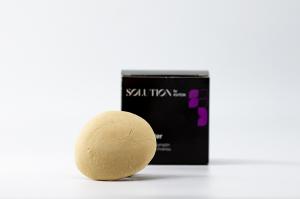Glucosides
Other names: Glucosides
Harm score: 2 (Derivatives of natural substances)
Glucosides, also known as Glucosides, are typical representatives of a group of natural compounds that are a combination of sugars and non-sugar components. These seminatural substances, which can be found in a wide variety of plants, are formed by the attachment of one or more glucose units to a non-sugar substrate (aglycone) via a glycosidic linkage. Glucosides are among the basic molecules of life and play a key role in many biological processes.
The use of glucosides is quite broad. In the food and pharmaceutical industries, glucosides are used for their ability to enhance the taste and flavour of products as they are broken down into sugar and flavouring components during heat treatment. In the health sector, they are then used as a component of many drugs. They are also key to the production of certain types of biofuels. One important glucoside, known as amygdalin (found in the cores of apples, apricots, peaches, cherries and many other fruits), is being studied for its potential anti-carcinogenic effects. In addition, various types of glucosides are also an ingredient in some types of eye drops, creams and other body care products. Thus, without glucosides, our living conditions would be significantly different.
Glucosides can be found in the following products

Liquid hand soap without perfume 300ml BIO, VEG
Product detail
Shower gel without perfume 500ml BIO, VEG
Product detail
Baby gentle washing emulsion 250ml BIO, VEG
Product detail
Shampoo Rhassoul 500ml BIO, VEG
Product detail
Prebiotic solid shampoo with anti-pollution protection Hair Booster - 50 g
Product detail